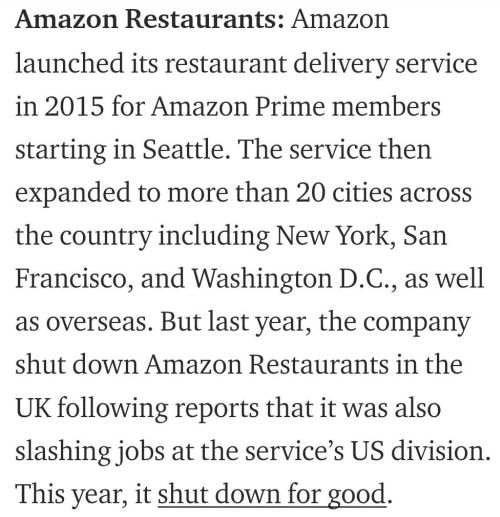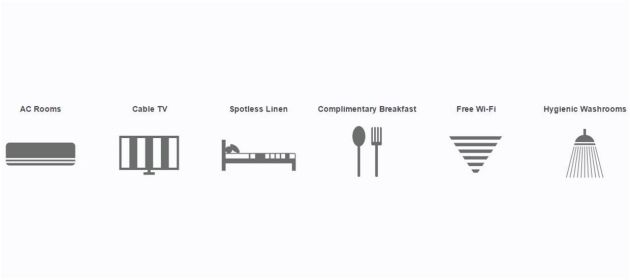In my last post on cross-selling entitled Cross Selling Is Hard, we had seen several cross-selling flops by majors.
In each case, a company that is wildly successful in one product category attempts to cross-sell a new product to its existing customers and achieves very little success. In some cases, the lack of success is so acute that the company discontinues the new product. (For the purpose of this blog post, the term “product” also includes services and solutions.)
In this post, I’ll speculate the reasons for the failure of cross-selling.
I’ll begin with Amazon, the pioneer and leader in the Ecommerce category.
One of the chief traits of category leaders, according to David Sacks, General Partner and Co-Founder of Craft Ventures and former Founder/CEO of Yammer and COO of PayPal, is that they become order takers because customers are naturally attracted towards them.
But there’s one downside of being a category leader: Arrogance and, with it, the inability to hard sell. Since other companies in a category must sell hard to win every deal, an order taker would find it very difficult to succeed in a new category where it’s not the category leader.
Let’s see how this played out in the case of Amazon Music, which is not a very notable cross selling success, and Amazon Fire Phone, one of the most notable cross selling flops covered in my previous post.
 When it launched its streaming music service, Amazon probably thought the hundreds of millions of its loyal ecommerce customers would automatically discover Amazon Music without any effort from its side to create visibility for it. Sadly, that didn’t happen. I know many Amazon Prime members who have been shopping on Amazon for nearly 20 years but haven’t even heard of Amazon Music. (I myself discovered it only two years ago, entirely by accident.) They pay a good sum for subscriptions to Spotify, Pandora, Gaana, and other pure music-streaming services when they could be getting Amazon Music for free along with their Prime memberships.
When it launched its streaming music service, Amazon probably thought the hundreds of millions of its loyal ecommerce customers would automatically discover Amazon Music without any effort from its side to create visibility for it. Sadly, that didn’t happen. I know many Amazon Prime members who have been shopping on Amazon for nearly 20 years but haven’t even heard of Amazon Music. (I myself discovered it only two years ago, entirely by accident.) They pay a good sum for subscriptions to Spotify, Pandora, Gaana, and other pure music-streaming services when they could be getting Amazon Music for free along with their Prime memberships.
Coming to Amazon Fire Phone, Amazon was probably so blinded by its 800 pound chimpanzee status in ecommerce that it thought it could pull off a proprietary Android phone without realizing that the open Android ecosystem had also become an 800 pound chimpanzee in the mobile phone operating system market. Didn’t work. Amazon killed Fire Phone a year after launching it. (For the uninitiated, Amazon Fire Phone didn’t support Play Store apps although it ran on Android operating system.)
Ditto Google and SAP. As category leaders in Search / Digital Advertising and ERP respectively, these companies were order takers and were unable to make the transition to order getters. As a result, they were unable to cross-sell their new products – Google+ and CRM respectively – to their installed base, letting Facebook and Salesforce dominate the social network and CRM product categories respectively.
Moral of Story: Arrogance that comes from being a leader in one product category could hamper cross-selling in another product category.
Next, let me take Core Banking Software, another cross selling flop listed earlier.
I’ll share a true story here. (Names of the companies are changed due to NDA).
Potluck Bank, a happy user of Core Banking Software from Pinnacle Technologies, wanted to sell bank accounts online to expand its market share in retail banking. The idea was to build a portal that supported instant account opening by customers in self-service mode, similar to how online shoppers order products on Amazon or Flipkart. It was clear from the initial solutioning discussions that the proposed portal would need to be tightly integrated with the bank’s CBS in realtime. Not surprisingly, the bank approached Pinnacle Technologies for building the portal.
Without bothering to understand the strategic importance of the bank’s initiative, Pinnacle’s Relationship Manager treated it as yet another Change Request and cursorily quoted a few million dollars price and 18 months delivery period. The bank baulked at this offer. Firstly, since this was an opportunistic initiative, it didn’t have any budget for it, and there was no chance of finding millions of dollars out of the blue. Secondly, it was hoping to launch the instant account opening portal within a couple of months to encash on the extreme Product Zeitgeist Fit enjoyed by the product. Ergo, the bank shopped around for an alternative. Long story short, Pinnacle Technologies lost the deal and Potluck Bank found another vendor and launched the online account opening portal in three months with a spend of less than $100K.
Moral of Story: Complacence that comes from being an incumbent vendor could result in failure of cross-selling of adjacent solutions.
Now, let’s take OTAs and Windows.
Make My Trip, Cleartrip and other Online Travel Agencies list branded hotel chains as well as budget hotels. While their websites have a filter to help customers discover budget hotels, customers are never sure about what they would get at a budget hotel. Ergo, they take the safe option of booking branded hotel rooms.
As a result, budget hotels were underserved by OTAs. Ditto budget travelers who did not or could not afford to stay at branded chains.
Enter Oyo. The new startup understood the pain on the part of both owners and customers of budget hotels. The SoftBank funded startup created a new platform exclusively for budget hotels. It stipulated a few basic amenities for every room branded as Oyo Room: Airconditioned Room, Cable TV, Complimentary Breakfast, Free WiFi.
As I highlighted in Request To Aggregators: Solve Your Customer’s Problems, Not Yours, Oyo persuaded thousands of budget hotels in dozens of cities all over India (now China and USA as well) to provide these amenities in some or all rooms in their properties. As a result, a traveler booking an Oyo Room got a consistent product, no matter which budget hotel she stayed in.
Oyo Rooms became a blockbuster hit by providing a consistent CX, which a mere filter on the websites of incumbent OTAs could not.
Coming to Windows, the desktop operating system was always clunky, to say the least. But that was masked by the growing power of the hardware on which it ran. Over time, Windows became the #1 desktop operating system.
However, it was not suitable for a lightweight mobile device. Without acknowledging this, Microsoft tried to ram it down the proverbial throat of smartphone users. It didn’t work. Even diehard Microsoft fans like me rebelled and totally refused to let Windows into our pockets.
The company realized its folly later and developed a brand new mobile operating system – Windows Phone – that was totally different from the traditional Windows. But, by that time, the iOS-Android ecosystems had become too well established to be dented by a new product, however good it was. Eventually, Microsoft shut down its mobile phone operating system.
Mobile phone sales has shot up by 5X but the number of big mobile phone OS players has fallen from 5 to 2. Exhibit A of "Winner Takes All". pic.twitter.com/LQxK4CouCz
— Ketharaman Swaminathan (@s_ketharaman) August 17, 2018
Moral of Story: Big markets attract huge investments. That germinates new companies that create brand new products from the ground up to solve the pain areas and address the hot topics of those specific markets, thereby delivering superior CX. Treating such markets as adjacent markets and trying to cross-sell tweaks of existing products often does not work.
To summarize, the three reasons why cross selling attempts fail are ACT:
- Arrogance arising out of category leadership
- Complacence caused by incumbency status
- Tendency to palm off existing products in new markets
Notwithstanding the countless examples of failed cross-selling initiatives, many companies continue to harbor the misconception “build and it will cross-sell”.
They’re perhaps misled by the statement “it’s 10 times easier to sell to existing customers than new customers”. They don’t realize that the old cliche only refers to cross-selling of addons of an existing product. Disaster strikes when they extrapolate the logic to cross-selling of a new product, which is an entirely different ballgame.
Banking and IT Services are two industries that have mastered cross-selling.
In a follow-on post, I’ll share some best practices followed by companies in these industries to make cross selling work. Watch this space!
